|
3/21/2020 0 Comments A Solid Hold on HairstylingBelieve it or not, I'm a little bit of a hair-nerd. OK, OK, OK, I know you already knew that. Not only do I stay on top of the current trends and styles, I also geek out on the numbers. Paying attention to what and how consumers are spending their money on haircare and grooming products is a pretty good indicator what's ahead. This is a good economic indicator, as well. Personal services are a luxury item so we want to spend our money wisely. We also want healthy hairstyling options. A Solid Hold on Hairstyling Serums, primers, mousses and more to smooth and sculpt tresses. While the hairstyling industry once revolved around sturdy sprays and stiff gels to keep the latest teased, flipped, winged or crimped locks in place, the segment has expanded over the years to include shine serums, primers to set styles, nourishing mousses, fresh-scented mists and much more.
According to data from Information Resources Inc. (IRI) hair styling gel/mousse sales rose just 0.7% to $1.1 billion in US supermarkets, drugstores, mass market retailers, military commissaries and select club and dollar retail chains for the 52 weeks ended Dec. 1, 2019. However, hair spray/spritz sales slipped 2.5% to $652.2 million. In the US prestige beauty category, hairstyling product sales increased 6% to more than $252 million for the 12 months ended Nov. 30, 2019, according to The NPD Group. Hair gel sales jumped 14% to $18.4 million, hair mousse/foam increased 6% to $17.4 million, hair spray stayed flat at $65.8 million and sales of other styling products rose 8% to $150.9 million. Read More Here >>>
0 Comments
Every decade has new hairstyles that come into fashion before quickly leaving again. While these hairstyles might once have been the height of style, looking back on them you wonder what the heck everyone was thinking. In the 70’s, men’s hair was getting longer, shaggier, and unrulier.
The shaggification (not a word) of men’s hair really started in the 1960’s. Before then, men’s hair was mostly short and neat. When the 60’s arrived, young people started questioning society’s attitudes on everything, and long hair became a symbol of rebellion. Soon, popular musicians like The Beatles began wearing their hair long, and long hair reigned supreme. You're going to have to click on the article for the full collection of excellent 1970’s male shaggyness. We’ve got flowing locks. Thick mutton chops. And of course plenty of bushy facial hair, too. The 70’s really were the hairiest decade. Enter at your own risk >>> 10 facts that’ll change how you consume it. Can we all agree we’ve hit max CBD hysteria? With CBD markets and thousands of sites and products, there’s nearly just as much misinformation as there are facts. The hemp-derived oil is 100 percent federally legal and powerful, but there are a lot of misnomers out there too. We sat down with the new cool kids on the cannabis block, David Weiner and Verena von Pfetten, the founders of weed-positive media and product brand Gossamer. Both knowledgeable experts, they myth-busted everything from dosing to legality—buckle up, because there are a lot of concepts to clear up.
CBD Is Cool and All, But It Has Limits “CBD products do a lot of things and help a lot of cannabinoids do their specialties, but it isn’t actually a stand-alone,” says von Pfetten. While CBD is getting all the buzz right now, the other 80-plus cannabinoids in the cannabis plant are pretty undiscovered. “But there is a real opportunity for people to create these products that have very specific effects,” she says. In the next few years, look for the market to explode with products that not only feature but showcase things like CBN and terpenes. “CBD is not a myth or hoax, but it’s also not a cure-all,” says von Pfetten. “It’s a basis for all these other layers that could be incredibly promising and exciting.” CBD Is Not for Sleep We’ve said it once and we’ll say it a thousand times: CBD is not a sedative to be taken for sleep. It will help with things that might be keeping you awake though, like pain or anxiety, says von Pfetten, but it will not lull you into a deep snooze. It’s sister, CBN, is a sedative, though, and a powerful one at that. “However, it doesn’t work on its own. It needs to be taken with CBD in order to be effective,” she says. So while CBD is not the main ingredient in CBN sleep aids, it is a vital ingredient to make the product actually work better. It Probably Has THC in It Most users and non-users don’t realize that the full-spectrum classification means that it has the (admittedly small) legally allowed amount of THC in it (which is .3 percent). “It is a federally legal product and it will not make you feel high, but it does have THC in it,” says Verena. And Potentially More THC Than Legal That bottle of CBD? It can kind of say whatever it wants to say because, technically, there isn’t much oversight. It’s now under the FDA’s department to test and verify products, but testing is infrequent. The Gossamer duo and their labs have independently tested a number of products directly off the shelves and “some of them are crazy,” says Weiner. “Not only do some not have CBD in them, but some of them have much higher doses of THC than are legal.” Why? This is a plant-derived product, so each and every batch is going to have its own variations and differences. For Gossamer’s own CBN product Dusk, each round is slightly different than the next, and that’s exactly why they test every batch independently. “Think about how hard this is when you are mass-producing CBD edibles, chocolates, or caramels,” says Weiner. “To get between that very specific concentration in every single chocolate, if you didn’t get it right, you’d have to dump an entire batch.” There is natural deviation in plants, so it’s impossible to claim each batch is exactly the same in potency and amounts. Dosing Is Personal CBD, and all things cannabis, affects every person differently. “Everyone has a different reaction to so many things, from caffeine to salt to alcohol to food to antibiotics,” says Weiner. “We think of CBD as this cure-all, this one-size-fits-all solution, but it’s not.” With a plant-based product, there’s no guarantee, so consumers have to educate themselves on personal percentages and dosing. You Already Produce CBD—Yep, Really “There is not enough discussion about what actually happens when you consume it,” says von Pfetten. “Your body naturally produces small amounts of CBD on its own.” That’s why our bodies interact so well with cannabis oil. “There are cannabinoids that we produce and there are cannabinoids that we get from plants and outside sources,” she says. You have an endocannabinoid system (all vertebrae do) with specific receptors that react exclusively to cannabinoids. CBD binds to those receptors and helps to regulate and maintain homeostasis. “All of that is happening in your body when you take CBD,” she says. Terpenes Are the Future “Terpenes are going to be the thing in the next two years,” Weiner says. You probably don’t even know it, but terpenes are actually in a lot of the products you already use. “They’re in perfumes, skincare, candles, and medicine already,” says von Pfetten. They are bountiful in the cannabis plant; we have much further research and studies conducted on the efficacy of terpenes than other elements of the plant. “Each terpene has their own effects that we can gain benefits from,” says Weiner. For Dusk, they chose terpenes that have a sedative or calming effect so they complement the CBN and CBD to work together to promote better sleep. But there are energizing terpenes and beyond too. “People understand what CBD is now, and it’s basically a base,” says Weiner. “Now, we can take the conversation one step further, like adding CBN. And then we can take the conversation even one step further and lay in terpenes, and that’s where you start to get wildly specific effects. As consumer knowledge grows, so do the products.” Organic is Not Possible “In 99 percent of cases that have that organic stamp on the bottle, it is fake—they just put it on,” says von Pfetten. That’s because it’s incredibly difficult to become certified organic in hemp and extraction processes. “It’s not that they aren’t organic, but the actual certification process requirements are very, very high,” she says. The farm that creates Dusk is organic, but it cannot put that claim on the bottle because legally it’s nearly impossible. “Your space might be organic, but one or two farms over is not, and those heavy metals pesticides can end up in the soil and your product as well,” she says. “You want consumers to be wary, but people in the [market] space are taking advantage of the consumer and muddying the waters.” That’s not to say what you’re consuming isn’t safe. A quality brand will test each batch a minimum of three times to ensure safety. “You test it at harvest, distillation, and right again before it goes into the bottle,” says von Pfetten. “The reason you test it those three times is to ensure you don’t have any runoff pesticides from nearby farms.” You Can Be Price-Agnostic CBD on its own is not a particularly expensive item, yet you’ll see a product for $10 and the same size bottle from a different brand for $110. What gives? “What they are doing with it, where they source it, terpenes, the formulations, the packaging, the cannabinoids, their willingness to dump a batch—there is a reason for different price points,” says von Pfetten. “CBD itself is not super cheap, but it’s also not insanely expensive, so at a certain point, you are absolutely paying for marketing,” she says. The main thing to ask yourself is “Does the product work for you?” “If it does, that’s all that matters,” says Weiner. But they suggest checking your product’s certificate of authenticity (COA) for your specific batch to verify what you’re consuming. But what you’re comfortable paying for is totally up to you. How You Consume It Matters—a Lot The effectiveness of CBD is based on how you consume it. “The number one most effective way is to vape it,” says von Pfetten. “The second most effective way is a sublingual tincture, meaning absorbing under your tongue—not swallowing it.” That means actually holding it under your tongue for 30, 60, or even 90 seconds to try to absorb as much as you can sublingually. The number one least effective way to consume CBD? Eating it. “You lose up to 70 percent of the active cannabinoids,” she says. So if you’re eating a 10 milligram gumdrop: you firstly have to hope it actually has 10 milligrams in it, which you don’t have any guarantee of at this point, and secondly, you’re losing 70 percent of it, so you’re maybe getting three percent at most, and that was only if it had 10 milligrams in the first place. “That’s why we stand behind tinctures at this point,” says von Pfetten. “Sure, vaping, but a lot of people are just reluctant to vape something at this point, and that we can understand.” The Gossamer duo isn’t over CBD though. Every day they get emails and notes from users of their CBN/CBD tincture, saying how much it’s helped them. “What we’re over is the gimmicks,” says Weiner. “CBD in coffee, etc.—the overpromising.” This information is from Domino The trend responsible for some of the 80s’ most ‘memorable’ barnets is back. But fear not – the modern look is less Deirdre Barlow, more a tumble of soft wave. It is a truth universally acknowledged that everybody wants the opposite of the hair they have. Those with bountiful curls are wont to straighten them to a crisp, while the rest of us crimp and twist, chasing waves via diffusers, tongs, curl creams and, lately, perms. That’s right, the trend responsible for some of the 80s most memorable ’dos is making a return – to the terror of many who are still scarred by their own perm-disasters. But fear not: the perm, which for many still conjures images of Neighbours-era Kylie Minogue, or Coronation Street’s Deirdre Barlow, has had an update. Long gone are the tight, brittle waves, as seen on peak-perm Barbra Streisand; the modern perm – or the new-wave perm, as it has been dubbed – is an altogether gentler look. It’s definitely more than “beachy” waves, but not quite corkscrew, and it has captured fashion’s collective imagination. On the catwalk, Gucci and Celine had a number of curly-haired models walking in their spring/summer 2019 shows, while the current face of Zara – ever a yardstick – is the curly queen Mica Argañaraz. Emma Stone kickstarted the trend for celebrity perms last year when her makeup artist posted mid-perm pictures to Instagram, quickly followed by fellow actors Jaime King and Olivia Munn. On TV, lawyer Marcia Clark’s perm became a subplot in The People v OJ Simpson: American Crime Story, before Daisy Haggard sported loose waves in the BBC’s Back to Life and Natasha Lyonne’s curl-tastic hair was named as “the real star of Russian Doll”. In the past week, Charlotte Gainsbourg, Priyanka Chopra and the model Taylor Hill all wore waves on the Cannes red carpet. Men, too, are getting in on the act, with Game of Thrones fans citing the “Jon Snow effect” as the reason behind renewed male interest in curls. Early iterations of the perm date back as far as 1872, although it was not until 1938 that Arnold F Willatt developed the “cold wave perm”, which avoids heat, and uses ammonium thioglycolate – a fact Legally Blonde fans will remember as the chemical compound referenced by Elle Woods during the case-solving court scene – to break down the hair’s protein structures and create curls. Modern perm techniques vary, and today many chemical perms have switched to using sodium thioglycolate, but the technology has not, in fact, moved on a great deal, according to Luke Hersheson, creative directive of Hersheson salons, which offers the new-wave perm (from £150). “The perception of perms was very much related to the haircut they were teamed with,” he says. “In the 70s and 80s, it was graphic cuts, quite short, extreme shapes and bubble perms. Nowadays, perms are for longer hair, so it’s less about the hair standing away from the head, and more about using people such as Julia Roberts as a reference. We’re not using old-school perm rods, either, but foam rollers, which are bigger and softer.” At Karine Jackson Hair & Beauty in London, hair stylists now do around four perms a day, up from just four a year of the “Think Curl” perm (from £100), which is ammonia- and thioglycolate-free. “In the 80s, when perms went wrong they often weren’t wound properly, which resulted in ‘fish-hook [sharply bent] ends’; now, Curlformers [a kind of curler that creates various types of curl] do the work, so it can’t happen with them,” says the salon’s founder and director, Karine, who has permed Neve Campbell’s hair. Social attitudes towards curls are also changing. Historically, curly, frizzy or even wavy hair has been associated with scruffiness or unprofessionalism – a belief that often comes with racist connotations. Over recent years, however, black men and women have embraced natural, afro hair textures. “We have seen an increase in the perm market for afro hair,” says Nicky Oliver, the founder and director of Nicky Oliver salon in Manchester, and an authority on styling for African-Caribbean and Asian hair. “People have been wearing theirs relaxed for years, then they wanted to wear their hair natural – but many still want it to be manageable. They have been used to blowdrying their hair. By doing a very tight perm, they can still have their curls but they will be easier to manage.” Jackson stresses that there is no longer a “one size fits all” approach; today, pre-perm consultations can include questions on everything from how often clients tie their hair up and go to the gym, to what medication they are taking, alongside a hair-strength test – all of which can affect how a perm takes to the hair and how long it will last (anywhere from two to 12 months). Jack Howard, hair colourist at Paul Edmonds, agrees: “Individuality is everything: with highlights, we used to do a sea of perfectly placed foils; now, that stripy uniform look is really dated. It’s the same with the perm,” he says. “It’s all about creating a bespoke look for the individual client that suits their hair texture, condition and style.” Howard has created a new technique, which he called “permage” (from £275) that combines perming and face framing highlights, and also uses Curlformers to create his curls. “The lived-in hair trend is really hot right now,” he says. “Modern perming isn’t about getting a tight curl and then growing or blow-drying it out, it’s about leaving hair in a more natural state and adding volume.” The “digital perm”, a Japanese method that has been growing in popularity the UK, follows the same vein. The process uses infrared heat, digitally monitored by a machine, as well as the application of chemicals to create the finished effect. “The digital perm gives you more choice as to whether you want it curly, straight or wavy,” says Christian Toth, hair shaping specialist at One2One Hair in Mayfair, London, who was the first to launch the digital perm in the UK (currently costing £390). It tends to appeal to clients who have “lifeless hair and those who are more open to experimenting with different looks”, he says. In other words, it’s perfect for supposedly non-committal millennials keen to give curls a try. If the current crop of perm-adopters are those who are accustomed to a life of transience – be it via the job or housing market, or romantic relationships – it makes sense that they would be wary of long-term hair-styling choices. Hersheson agrees that part of the appeal could be down to the fact that perms are now less, well, permanent. “Because the curls are softer, they drop out quicker, but you don’t get such a definitive regrowth,” he says. The 90s were also synonymous with super-straight hair – see Kate Moss, Gwyneth Paltrow and Clueless’s Cher Horowitz – and those who grew up during this era may now be looking to switch allegiance. “I think we’ve been through years of hair that looks tonged, but it has come to have Real Housewives connotations. So there’s a rebellion against that [with hair that has] wave and movement, without looking like you’ve worked at it too hard. There’s something more soulful about hair that’s got movement to it. It has more ‘warmth’ to it than poker-straight hair.”
Although organic perms are less common, they do now exist, offering perms free from harsh chemical ingredients that might also appeal to younger generations, given their propensity for organic foods. That said, Oliver maintains that it is hard to find any perming products that would be considered environmentally friendly. “We’re dealing with chemicals at the end of the day,” he says. The number of readily available styling products for curly and natural hair type has also risen considerably. Superdrug, for example, reports increased customer interest in enhancing natural curls; its own-brand curly range, Black Castor & Shea, is now a bestseller, with sales almost trebling over the past year. This may well have translated into curls becoming fashionable again. The laid-back, relaxed look achieved by updated perming techniques means that fringes, too, are getting the curl treatment. And if the thought of getting a perm makes nothing curl except your toes, don’t panic; you can always fake it with a pseudo perm. This curl raising history is brought to you from The Guardian ...But It’s Not What You’re Thinking... There was a time when bobs were synonymous with soccer mom, 12 year-olds and Upper East Side prepsters. But as the ladies of Hollywood are proving, a short cut can be breezy and cool, and not the least bit snoozy. Whether worn sleek or wavy, angled or blunt, this summer’s "it" style is trending precisely because it’s so damn versatile. (The fact that it also keeps hair from sticking to the back of your neck is a nice bonus.) Angled Bob After years of rocking a lob, Kristen chopped off a few extra inches in March officially putting her in bob territory. Hitting at just under the chin with slightly angled ends, the cut is elegant with a little edge (much like the wearer). Razored Bob The modern take on "surfer girl hair" still involves plenty of waves and beachy texture, but instead of long, cascading strands down the back, it’s blunt and thick and much (much) shorter—seen here on Julianne Hough at the Billboard Awards earlier this month. Side-Swept Bob Cate’s bob has a similar texture and length as Julianne’s, but instead of parting her hair down the center, she swept everything up and over to one side—again proving there’s no wrong way to do it. Layered Bob We’re going to take a wild guess and say we weren’t the only ones who saved Mandy’s softly tousled brunette bob to our phones when she debuted it in March. Just barely clearing her shoulders and cut at a slight A-line so that the longest pieces are in front, there’s plenty of volume and movement throughout. Sleek Bob Fact: A sleek, center-parted bob will always be classic. Lightly curl in the ends to frame your face and use a shine spray on the mid-lengths and ends to get that reflective sheen. Slicked-Back Bob Whereas curled in ends are classic, flicked out ones are cool. Slick back the top and tuck both sides behind your ears to get the full effect. (Might we suggest a flicked cat-eye to match?) Banged Bob Leave it to Jessica Chastain to show us that two trends (bangs and a bob) are better than one. Worried about reliving your kindergarten bowl cut? Ask your stylist to snip into the ends to give it more movement and break apart the line, so it’s not just one solid block of hair. Asymmetrical Bob Or if you’re one of those people who like the idea of bangs, but always end up regretting them by the next sweaty day, consider an asymmetrical bob with barely-there bangs that blend into the rest of your hair (though one could argue they’re just layers at that point). Tuck the other side behind one ear for maximum effect—and to show off those killer cheekbones like Charlize did at CinemaCon last month. Sharp Bob For the lady who wants a no-nonsense cut, a sleek, chin-length bob with sharp lines is a solid option. We love how Greta Lee’s minimalist cut requires very little styling, but still looks "done" (a very welcome thought—especially as we head into the muggier months). Chin-Length Bob
Mother of Dragons, the Unburnt, Protector of the Seven Kingdoms and ultimate hair chameleon: Emilia Clarke shows us that it is possible to grow your hair out from pixie to bob without sacrificing style (or, um, rocking an unintentional mullet) along the way. This Summer trend brought to you from PureWow |
Hair by BrianMy name is Brian and I help people confidently take on the world. CategoriesAll Advice Announcement Awards Balayage Barbering Beach Waves Beauty News Book Now Brazilian Treatment Clients Cool Facts COVID 19 Health COVID 19 Update Curlies EGift Card Films Follically Challenged Gossip Grooming Hair Care Haircolor Haircut Hair Facts Hair History Hair Loss Hair Styling Hair Tips Hair Tools Health Health And Safety Healthy Hair Highlights Holidays Humor Mens Hair Men's Long Hair Newsletter Ombre Policies Procedures Press Release Previous Blog Privacy Policy Product Knowledge Product Reviews Promotions Read Your Labels Recommendations Reviews Scalp Health Science Services Smoothing Treatments Social Media Summer Hair Tips Textured Hair Thinning Hair Travel Tips Trending Wellness Womens Hair Archives
January 2025
|
|
Hey...
Your Mom Called! Book today! |
Sunday: 11am-5pm
Monday: 11am-6pm Tuesday: 10am - 6pm Wednesday: 10am - 6pm Thursday: By Appointment Friday: By Appointment Saturday: By Appointment |


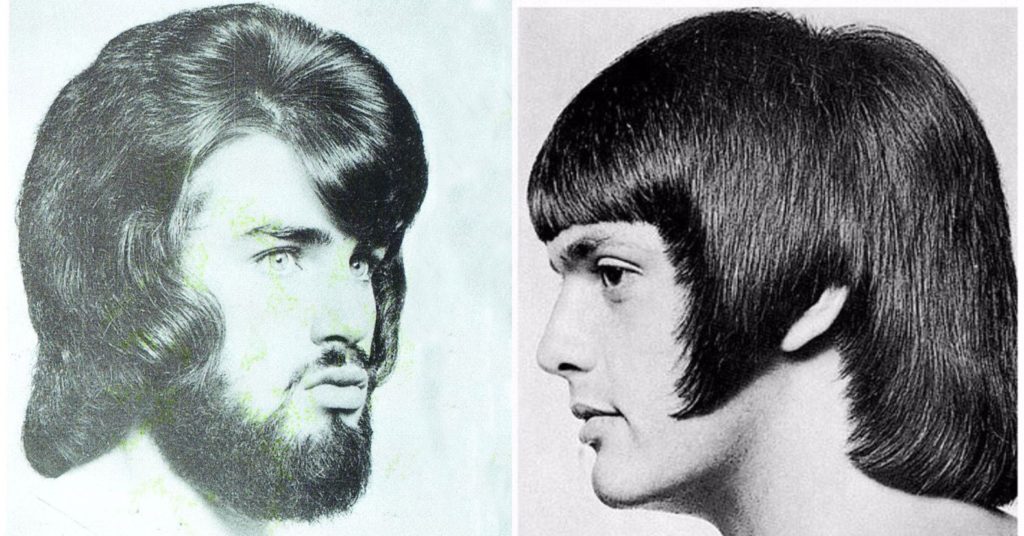

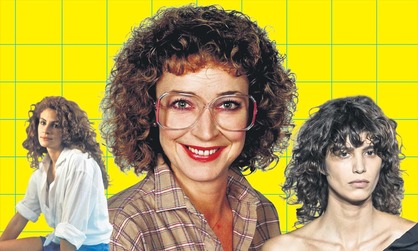
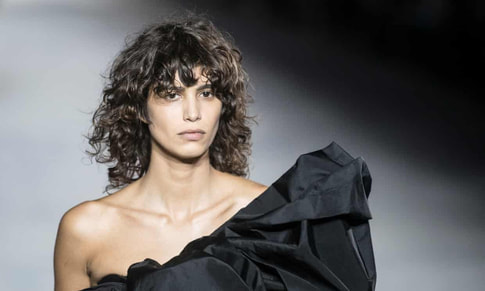

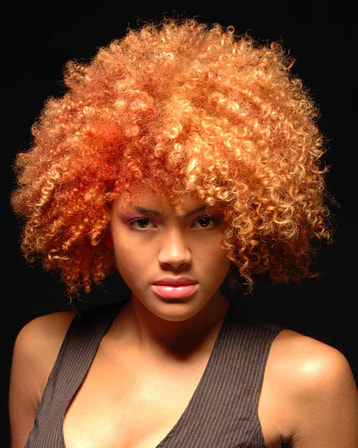

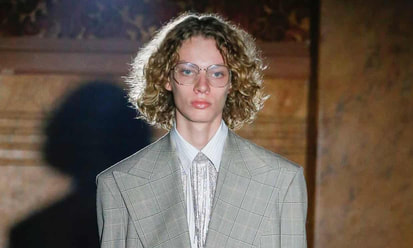





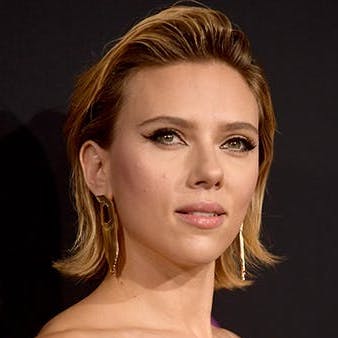




 RSS Feed
RSS Feed